Are you tired of using shampoo without feeling completely clean? Look no further than the shampoo brush! This handy tool can help give your scalp a deep clean and leave your hair feeling refreshed and rejuvenated.
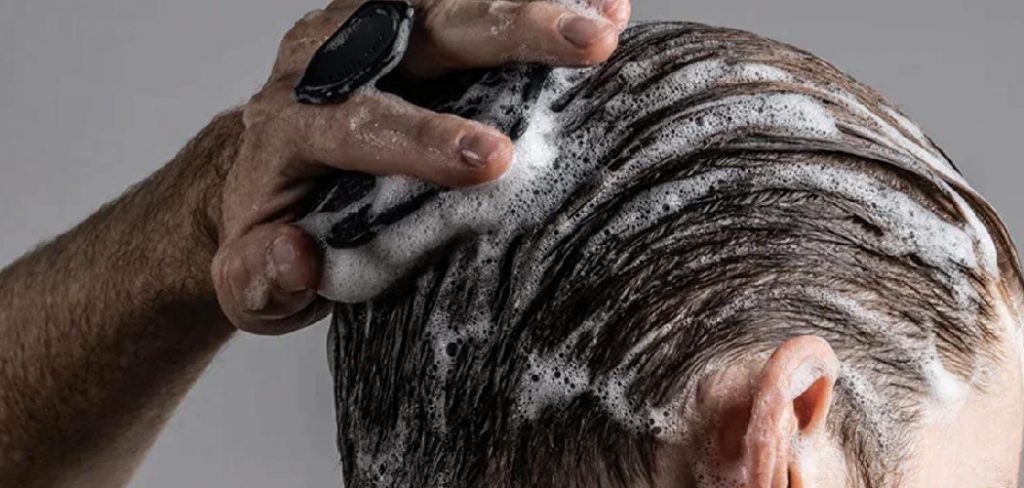
A shampoo brush is a handy tool that can enhance your hair-washing routine by providing a gentle yet invigorating massage to your scalp. Using a shampoo brush not only helps to cleanse your hair more effectively but also stimulates blood circulation in the scalp, promoting healthier hair growth. As a bonus, it can also help to distribute shampoo evenly throughout your hair, ensuring a thorough clean.
In this guide on how to use shampoo brush, we will guide you through the steps of using a shampoo brush to optimize your hair-washing experience and achieve a clean, refreshed scalp. Let’s dive in!
What Will You Need?
Before we get started, here are a few things you will need for an optimal shampoo brush experience:
- Shampoo Brush: This is the primary tool that we will be using. You can find them in various shapes and sizes, so choose one that fits your needs and preferences. Some have soft bristles, while others have firmer ones. Choose one that feels comfortable on your scalp.
- Shampoo: As with any hair-washing routine, you will need shampoo to clean your hair. Choose one that suits your hair type and concerns.
- Water: This may seem obvious, but having water at hand is essential for wetting and rinsing your hair during the process.
- Towel: You will need a towel to dry your hair after washing.
With these items in hand, you are ready to begin!
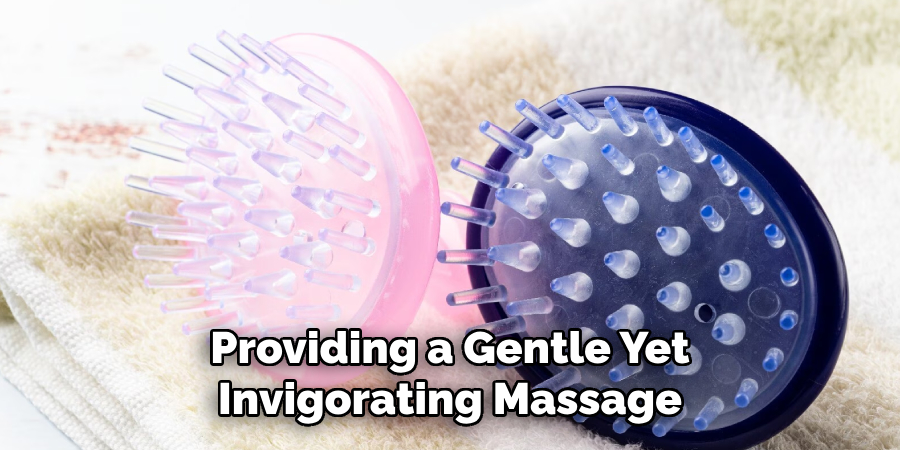
10 Easy Steps on How to Use Shampoo Brush
Step 1: Wet Your Hair
Before using a shampoo brush, thoroughly wet your hair under warm water. Ensure that your hair is completely saturated from roots to ends. Wetting your hair helps to soften the strands and open up the hair cuticles, allowing the shampoo to penetrate more effectively and provide a thorough cleanse. Take your time to ensure every strand is soaked correctly before proceeding to the next step.
Step 2: Apply Shampoo
Apply a generous amount of shampoo onto your hands and lather it up. Alternatively, you can also apply the shampoo directly onto the bristles of the shampoo brush. Make sure to use a sulfate-free and gentle shampoo suitable for your hair type.
Step 3: Start at the Roots
Gently place the shampoo brush on your scalp, starting at the roots of your hair. Apply light pressure and move the brush in circular motions, working your way throughout the scalp. This motion helps to exfoliate the scalp, remove dirt, and stimulate blood circulation, promoting healthy hair growth.
Ensure you cover the entire scalp, focusing on areas that accumulate oil or product buildup. Take your time and enjoy the massaging sensation as you move the brush along your scalp.
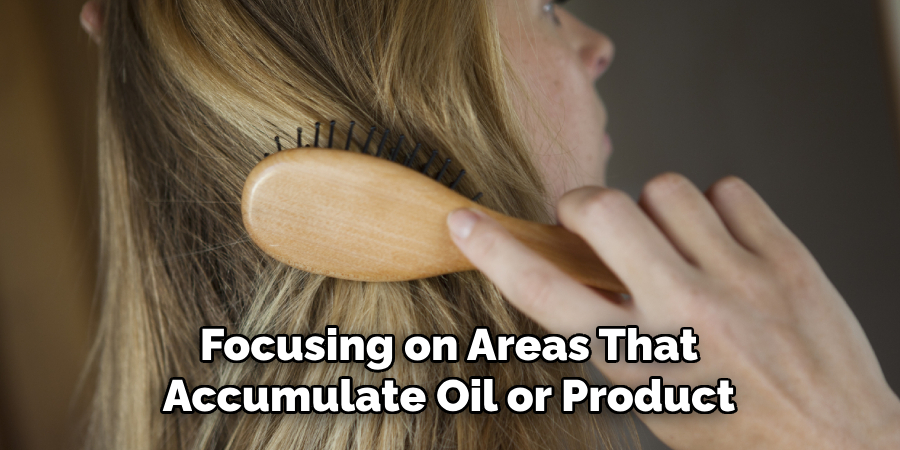
Step 4: Massage the Scalp
Massaging the scalp feels incredibly relaxing and provides numerous benefits for your hair and scalp. As you move the shampoo brush in circular motions, apply light pressure. This massaging action helps to stimulate the hair follicles and promote blood circulation to the scalp. Improved blood flow nourishes the hair follicles, contributing to healthier hair growth.
Additionally, massaging the scalp can help exfoliate any dead skin cells and remove dirt or product buildup, leaving your scalp feeling refreshed and clean. Take time during this step and enjoy the soothing sensation of working the brush across your scalp.
Step 5: Move Down to Hair Strands
After massaging the scalp, it’s time to move down to the hair strands. Work the shampoo brush through your hair, starting from the roots and moving towards the ends. This helps distribute the shampoo or conditioner evenly, ensuring every strand receives the nourishment it needs.
You’ll also untangle any knots or tangles as you comb through, making your hair more manageable and easier to style. Remember to be gentle to prevent breakage or damage, especially if you have fragile or damaged hair. Take your time and enjoy the process, giving your hair the attention it deserves for optimal care and health.
Step 6: Repeat as Needed
To ensure thorough cleansing and maximum benefits for your scalp and hair, it’s recommended to repeat the shampooing process as needed. Factors like hair type, level of oiliness, and exposure to environmental pollutants can influence how frequently you should shampoo. While some individuals prefer daily washing, others may find that shampooing every other day or even a few times a week is sufficient.
Pay attention to the condition of your hair and scalp and adjust the frequency accordingly. Overwashing can strip the hair of natural oils, leading to dryness and potential damage, while insufficient cleansing may result in a buildup of oils and product residue. By finding the right balance for your hair, you’ll maintain a healthy and vibrant look, promoting optimal scalp health and hair condition.
Step 7: Rinse Thoroughly
After shampooing, it’s essential to thoroughly rinse your hair to remove any remaining product and impurities. Ensure that the water is at a comfortable temperature, neither too hot nor too cold.
Use your fingers to gently massage your scalp and hair while rinsing, allowing the water to flow through your strands and effectively rinse any residue. Take your time with this step to ensure a clean and refreshing feel to your hair. Once you’re confident that your hair is thoroughly rinsed, you can move on to the next step.
Step 8: Apply Conditioner
If you prefer using conditioner after shampooing, now is the time to apply it. Conditioner helps to nourish and hydrate the hair, leaving it soft and manageable. Choose a conditioner that suits your hair type and apply it from mid-length to the ends, focusing on areas that are drier or more damaged. Gently massage the conditioner into your hair, allowing it to penetrate the strands.
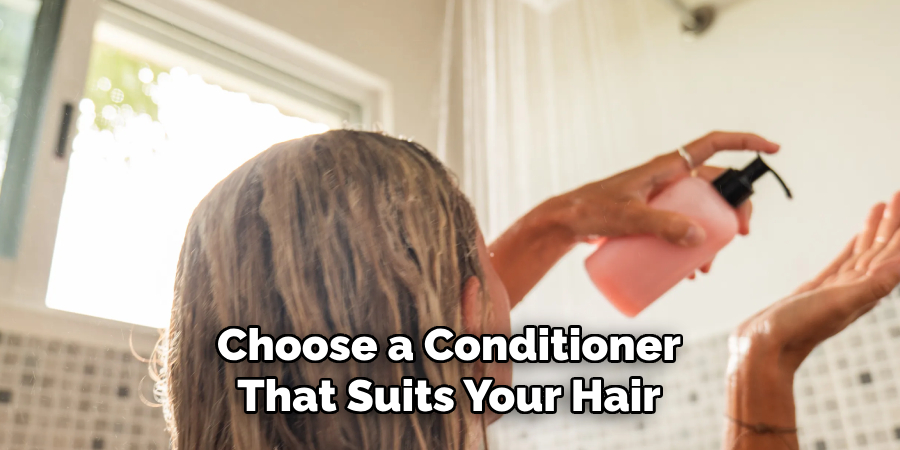
Leave it on for the recommended time per the product instructions, then rinse thoroughly with cool water. Conditioning can help reduce frizz, improve hair texture, and enhance overall shine and manageability. Experiment with different conditioners to find the one that works best for your hair, and adjust the frequency of conditioning based on your hair’s needs, whether it’s every time you shampoo or a few times a week.
Step 9: Brush Through Hair
After conditioning, it’s time to gently brush through your hair to remove any tangles and evenly distribute the conditioner. Start from the ends of your hair and work up to the roots, using a wide-toothed comb or a brush with soft bristles. Be gentle to avoid causing any breakage or damage.
Brushing helps to detangle the hair, smooth the cuticles, and promote even distribution of natural oils, giving your hair a polished and healthy appearance. Remember to be patient and take your time while brushing, especially if you have long or thick hair.
Step 10: Final Rinse and Finish
Once you’ve brushed through your hair, give it a final rinse with cool water. This helps to seal the cuticles, resulting in shinier and smoother hair. Cool water also has a toning effect on the scalp, leaving it feeling refreshed and invigorated.
After rinsing out all of the conditioners, gently squeeze out any excess water from your hair and wrap it in a towel for a few minutes to absorb the moisture. Avoid rubbing or wringing out your hair, as this can cause frizz and damage. Finally, style your hair as desired using heat-protectant products if necessary, and enjoy your clean, healthy-looking locks!
By following these steps, you’ll have a thoroughly cleansed scalp and hair and promote better overall hair health.
5 Things You Should Avoid
- Using Excessive Force: Avoid applying excessive force or pressure while using the shampoo brush. Gentle and controlled movements stimulate the scalp and promote blood circulation.
- Using on Broken Skin or Scalp Inflammation: If you have any open wounds, cuts, or scalp inflammation, it is best to avoid using the shampoo brush until the skin has healed. Using the brush on compromised skin can cause discomfort and further irritation.
- Overusing the Shampoo Brush: While the shampoo brush can provide a therapeutic scalp massage, it is essential not to overuse it. Excessive use can lead to overstimulation of the scalp and may cause scalp sensitivity or dryness. Use the brush sparingly and listen to your scalp’s needs.
- Sharing the Shampoo Brush: To maintain good hygiene and prevent the spread of bacteria or fungal infections, it is advisable not to share your shampoo brush with others. Each individual should have their brush to ensure cleanliness and reduce the risk of contamination.
- Neglecting Regular Cleaning: Regular cleaning is essential to keep your shampoo brush in optimal condition. Neglecting to clean the brush can lead to product buildup, bacteria growth, and an overall ineffective and unhygienic experience.
By avoiding these common pitfalls, you can maximize the benefits of using a shampoo brush and maintain a healthy scalp and hair.
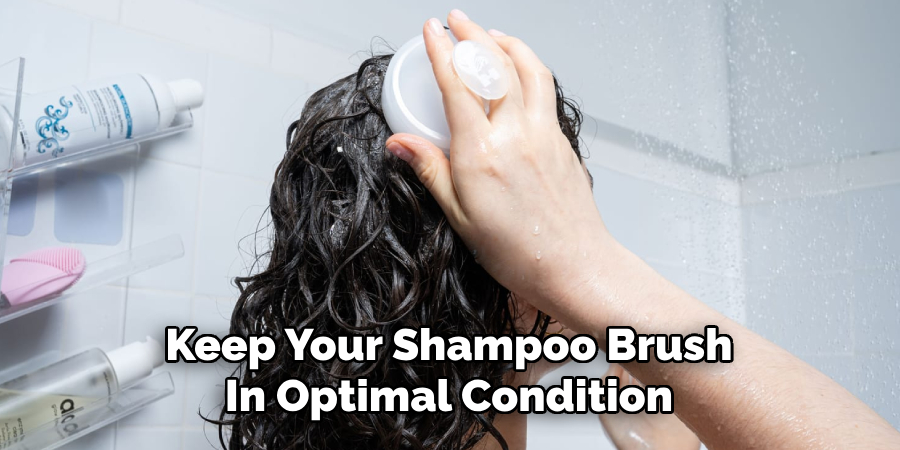
Conclusion
How to use shampoo brush can be an excellent addition to your hair care routine, providing numerous benefits for your scalp and hair.
Remember to use the brush gently and sparingly to avoid overstimulation and scalp sensitivity. It is also essential to maintain good hygiene by not sharing your brush with others and regularly cleaning it to prevent product buildup and bacterial growth.
By following these guidelines, you can enjoy the therapeutic benefits of a shampoo brush while promoting a healthy scalp and luxurious hair.
About the Author
Jane Hubbard is a passionate beauty expert with a wealth of experience in makeup, hair, and overall beauty techniques. After years of working as a hairdresser specialist, she followed her entrepreneurial spirit and started her own consultancy business.
Jane has always been driven by her desire to help others feel confident in their own skin, and she does this by sharing her knowledge, experiences, and practical beauty tips. Through her consultancy, she empowers individuals to embrace their unique beauty, offering tailored guidance that boosts both self-esteem and personal style.
Professional Focus
- Specializes in makeup, hairstyling, and beauty consulting.
- Provides personalized beauty advice, tips, and techniques to help individuals feel confident in their appearance.
- Dedicated to staying up-to-date with the latest industry trends and developments.
- Passionate about creating a comfortable and empowering experience for every client.
Education History
- University of Craft and Design – Bachelor of Fine Arts (BFA) in Woodworking and Furniture Design
- Woodworking Apprenticeships – Extensive hands-on training with skilled craftsmen to refine carpentry and furniture making techniques
- Online Courses & Masterclasses – Continued education in advanced woodworking techniques, design principles, and specialized tools
Expertise:
- Makeup artistry, hairstyling, and beauty consulting.
- Personalized beauty techniques to enhance confidence and self-expression.
- Educating clients on how to maintain their beauty routines at home.
